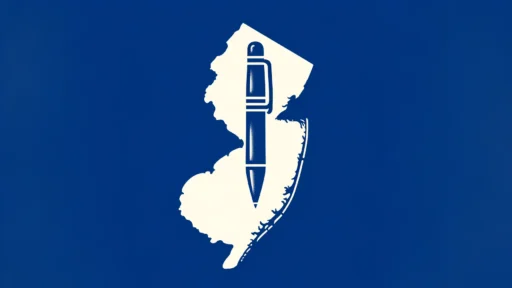The DMV Release of Liability Form, otherwise known as the general liability form, or release of liability form Word document, is an essential legal paper that separate the seller from any further responsibility for the actions of the vehicle after it has changed hands. It is a must-have when selling or transferring a vehicle, as the seller can therefore efficiently get rid of any potential liability forms, such as accidents, parking tickets, or other issues, that may have arisen after the sale. Therefore, for a smooth transition and peace of mind, it is important to be aware of the purpose, benefits, and procedure of completing and sending the Release of Liability Form.
So, here are all the things that you should remember: If you are clear and comfortable with the steps, in a nutshell, getting a notary to confirm the title transfer is possible without the seller, is the main thing you should do. Plus, a donation of the car can also be another way out if you follow all the rules and regulations.”If If the easiest way to have the title notarized without the original seller is that you have an understanding of the type of the vehicle, it is also the best way that the proceeds of the car will go to the charity of your choice.
Get the facts straight: For example, one of the methods you can use is to get a third party involved in the process, someone who is both trustworthy and licensed, and complete a bill of sale with the help of this person, the new owner, and the charity. This way, the entire situation establishes itself in a legal manner, making it simple for the parties involved. You also comply with regulations and protect yourself from any problems sparked by a simple change of ownership, according to the member of the association.
It is really important to complete and submit inmediatelly the Release of Liability Form once you sell or give the vehicle away. No time should be lost! The point is that holding back could get you in deep trouble with the law.
2. How can I fill it out?
This will be very easy! You should find the document on the web of your local DMV, complete it and e-sign. The few things you have to do will be to input the vehicle identification number (VIN), the personal data of the new owner, and your e-signature.
3. What should I do after the form is filled with the required information?
The form must be sent to the DMV through either online submission or posted to their post office box. The easiest way for you, but don’t use the pigeons they are not reliable.
Now that you know the steps to take to fill in the form, we will answer the questions usually asked by prospects first.
Frequently Asked Questions About the DMV Release of Liability Form
If you’ve got an inkling of understanding about the DMV Release of Liability Form, let’s chit-chat a little here and answer some questions that are still playing in your mind.
1. Would it be possible that I upload the form?
The post can only be submitted through an online form and mail to the DMV without the seller being present.
Yes, many DMV websites have a feature that allows filling the Release of Liability Form online, which is convenient and faster for processing.
2. What if I can’t find the form on the DMV website?
If you are unable to locate the Release of Liability Form on the DMV website and struggle with it, don’t be alarmed. It happens quite often that forms are in the remote parts of the website. Searching for it might prove to be fruitful or try sections that correspond with vehicle registration or transfers. When all else is not successful, feel free to get in touch with DMV customer service.
3. Do I need to keep a copy of the submitted form?
It’s highly recommended that you retain a copy of the form that you have submitted as a record of your responsibility, and to evidence notifying the DMV that you relinquish the vehicle to the buyer, which might be of help in the future.
4. Is the Release of Liability Form the same as transferring ownership?
Actually, the Release of Liability Form and transferring ownership are not equal, they are two different activities. The Release of Liability Form exculpates the seller from any doom to come but the transfer of ownership is a simple act of legal transferring of the title and registration to the new owner.
5. What if I don’t submit the Release of Liability Form?
In the event that you miss the deadline and fail to submit the Release of Liability Form after selling or giving away the vehicle, the first thing for you to realize is that you are not off the hook. Should the vehicle be involved in any accidents, get illegal parking tickets, or otherwise get into trouble, you may still be legally responsible and need to suffer related judicial and financial consequences. In order to stay safe and avoid unnecessary responsibility, make sure to fill in the form and submit it as soon as you can.
Frequently Asked Questions About the DMV Release of Liability Form
It is the acme of time to give the go ahead to the questions that are the ones to get you sleepless nights (or maybe just keep you mildly curious). Stop! Here is a list of some common problems:
Common Queries About the DMV Release of Liability Form Answered
1. Can I sell my vehicle without the form?
Technically, yes. But taking such a step would be like jumping out of a plane without a parachute—extremely hazardous. The sale of your vehicle without the Release of Liability Form does not automatically mean that you will not be liable for any accidents arising therefrom.
2. Do I need a notary to complete the form?
Whether you need a notary to complete the form depends on the regulation of your state. In some states, notarization is needed whereas in others, a simple declaration by the declarant is the requirement. It is advisable to check the regulations of your state. We now proceed to unravel the halos encompassing the Release of Liability DMV form.
3. What happens if I don’t submit the form?
But the consequences follow you extremely slow. If you do not happen to be the one to file the Release of Liability Form with the DMV in case you sell your vehicle, then you could really be in big trouble. Not complying with this indispensable procedure still puts you in the DMV’s records as the legal owner of the vehicle, hence, you might be forced to pay for all accidents, fines, and other incidents related to the vehicle.
4. Can I download the form online?
100% correct! Most DMV websites have the Release of Liability Form as a downloadable document. The form is generally in the “Forms” or “Vehicle Services” section of the DMV of your state. By completing the form online, you skip a physical trip to the DMV office and are in control of the time and place you want to do it.
5. Are the forms of Release of Liability and Bill of Sale the same?
No, they are two separate documents with distinct purposes. In the case of the Release of Liability Form, it makes the assumption that someone has sold their vehicle; the vehicle and its after-sale responsibilities are no longer the seller’s. The Bill of Sale is the principal legal document that demonstrates the transaction.
Our discussion of the DMV Release of Liability Form brought up a few more questions that might have crossed your mind. As an informed and peace-of-mind car owner, you can now more confidently go through the process. It is always the better choice to do a thorough job and stick to the correct procedures so that you avoid any future problems.
Release of Liability DMV Demystified
Now that the Release of Liability Form is clear to us, does it make any sense if we continue with the purpose and advantages hidden into the form? Get ready, enlightenment waits for you right after reading this single paragraph!
What are the Reasons and Benefits of the Release of Liability DMV Form?
1. Look after your interests: In securing a sale, the form serves as a life-saving tool for a person that chooses to sell. It guarantees the legality of the new owner and shields the seller from being responsible for any subsequent harm. That’s similar to your personal liability shield.
2. A peaceful mind: When you fill the form, you are free from the cares of the car and its achievements and misfortunes. You can wipe your plate so that you can go to bed and only wake up to a new day free of any unexpected parking tickets.
By the way, have you ever wondered that you can sign a document online that has been notarized?
Notarize your documents online
Yes, that’s right, you heard it correctly! There’s no longer any need to go to the notary office for notarization physical. With BlueNotary, you can do the notarization of your Release of Liability Form or any other document right from the comfort of your home (or your magical fortress). Just go to the BlueNotary website and follow the directions given to you. You will be taken through the process and once you are done, you will be in possession of a legally notarized document which you can submit. It’s just like calling a virtual notary whenever you need it!
It is the seller who must know and perform accurately the DMV Release of Liability Form process without errors to be relieved from the responsibilities that may arise from the vehicle in the future.
Indeed, the DMV form is the best method for sellers to enforce their rights, but sellers must also be aware of the sales agreement before signing it.
To get a better understanding about the DMV Release of Liability Form and it’s complexities, one is advised to contact the local DMV or other relevant authorities for the specific guidelines and the requirements.
The document helps the seller to release himself or herself from the responsibility of the sold car legally. Now let’s move on to the car title and the process in which the seller is not part of it anymore.
from any responsibility for the vehicle’s future actions. As soon as the document is turned in, the seller is not accountable for any accidents, parking tickets, or other matters which the new car owner may be dealing with. Despite this, the form can only release the owner from that day and also has certain restrictions.
Everything You Need to Know About the DMV Release of Liability Form
This is where we drown you in a sea of information, though we do it with the very least liability – no catapult involved here. So, without much ado, here’s everything you ever wanted to learn about this:
1. When should you complete the form? It’s a must to be and the vehicle the vehicle is new owner the car’s new registered to upload the Release of Liability Form as soon as you sell or waiver your vehicle or give it away. As soon as possible! Remember, if you delay, you might be held liable for any damage caused.
2. How should you fill out the form? The process of completing it is pretty straightforward! Just go to the DMV website in your area, look for the form before you fill it in. The document will require you to input a variety of details such as the car’s unique number (VIN), the new owner’s personal data, and your e-signature. It’s like the time to say goodbye to your trusted car.
3. What happens next? Once you finalise the form, you will then be required to hand it over to the DMV through the proper channels, ensuring transmission thereof. You may do this by either making an online submission or posting it to the specific post office box provided for that matter. Choose your most favourable method, but never ever send it via a carrier pigeon, they have a habit of wandering away!
Now that you have the required knowledge of filling out the form, let’s handle the inquiries that come up often.
Frequently Asked Questions About the DMV Release of Liability Form
Now that you have understood the main points of the DMV Release of Liability Form, let’s cover some issues that have not been resolved yet:
1. Can I submit the form online?
Sure. You can submit the Release of Liability Form online at most DMV websites, apart from being more convenient, the whole process requires a shorter time of processing (online).
2. What if I can’t find the form on the DMV website?
Don’t start panicking if you can’t locate the Release of Liability Form on the DMV website. The form maybe is located in a very strange part of the website. You can first try the search function or find the section of the vehicle registration or transfers.
3. Do I need to keep a copy of the submitted form?
It’s always a good idea to keep a copy of the submitted form as evidence that you fulfilled the obligation and the liability of the vehicle was released, in the absence of which one may still be necessary.
4. Is the Release of Liability Form the same as transferring ownership?
Yes, the Release of Liability Form and the transferal of ownership are two different things. The megatox form and giving another party the ownership are of different sources. By filling out the megatox form you are informing the DMV of the of the discharged party thus if the car is registered under your lien release. For the car you have, follow the instructions and fill it out. Old Car Liability Release Form is another name of the Release of Liability Form.
It is always advised to keep a copy of whatever you are submitting as proofThe Release of Liability Form is a formality required for the state’s last record that releases the seller from future liability while the transfer of ownership is a legal process that changes the title and registration to the new owner.
5. What if I don’t submit the Release of Liability Form?
Should you neglect to provide the Release of Liability Form after selling or giving away your vehicle, you might still be in trouble for any accidents, parking tickets, or other issues that may arise. This may lead to possible legal and financial consequences. In order to take your precautions and avoid liability that is not necessary, it is extremely essential to complete the form and send it off without any delay
Frequently Asked Questions About the DMV Release of Liability Form
We will focus on the questions that guide your nights (or maybe they are only the ones which arouse your mild curiosity). Here are some common questions without hesitation:
Some Tof he Most Popular Questions On The DMV Release Of Liability Form Cleared
1. Can I sell my vehicle without the form? Technically speaking, definitely. However, such a way would be equivalent to bungee jumping without a rope— very dangerous. Without the Release of Liability Form, you might yet even be the one who is at fault for a car incident which you do not own anymore.
2. Do I need a notary to complete the form? Well, the need for a notary depends on the requirements of your state. Some states might want you to have the form notarized, while others may not. To secure yourself, visit your state’s unique regulations.
Let’s proceed to demystify the Release of Liability DMV form.
3. What happens if I do not hand in the form? The consequences of dragging one’s feet! If you do not hand in the Release of Liability Form to the DMV when you have sold your vehicle, it is possible that you will bring upon yourself a lot of problems. In the absence of this very step, the DMV would still regard you as the legal owner of the vehicle, consequently, you may be accountable for accidents, tickets, or any other incidents concerning the vehicle.
4. Is it possible that I can get the form that is needed from online sources? Sure you can! Most of the DMV websites have a form called the Release of Liability Form in their “Forms” section. You can, in most cases, get it under “Vehicle Services” as well. Getting the form from the internet instead of going to the DMV office is a great time and resource-saving idea.
5. Is the Release of Liability Form the same as the Bill of Sale? No, they are two different documents that perform different functions. A Release of Liability Form gives you no further responsibility for the vehicle sold, while the Bill of Sale being a legal document proves the sale.
Here, we have clarified a few more questions about the DMV Release of Liability Form, so you will be confident and free from any worries during the process. Nonetheless, it is always safer to be careful and follow the process without making any mistakes.
Demystifying the Release of Liability DMV
After we have figured out the Release of Liability Form, the thing to do is to get informed of its objective and the things it can do for us. And now, you are just a paragraph from sight.
Understanding the Release of Liability DMV Form’s Purpose and Benefits
1. Your interests are covered: The form is a most necessary barrier for you as a seller, and it is also the best means of ensuring a smooth handover of the vehicle’s ownership and that you are not the person being held responsible for the accidents caused by someone else. It’s reminiscing to your personal liability shield.
2. You’re calm and easy: When you fill out the form, you can say goodbye to your vehicle, knowing that its future at the top and the bottom won’t be connected with you in any way. You can go to bed finally and sleep well at night knowing that you won’t receive any extra and unwanted parking tickets.
Sorry, did you get that? Notarizing your documents online is a service that is available through bluenotary. Isn’t that amazing?
Online Notarization through BlueNotary
Times when you used to have to go to a physical notary office are no more! Not with BlueNotary where you can not only do the Release of Liability Form but do any document notarization while being in your home (or magical fortress).
Just click on BlueNotary’s site, and after that, you will be provided with the next steps so that you can complete the process by yourself, and you will be given a legally notarized document in the end, which can be sent immediately. It is as if you had the virtual notary on your disposal!
To sum up, the DMV Release of Liability Form is a very important paper that the sellers have to know and correctly fill up in order to protect themselves from any liabilities emerging in the future from the vehicle. On-time delivery and full completion of the form are the basic requirements for getting a smooth transition and for the seller to have a peace of mind.
Suppose there is an aspiration to comprehend deeper the DMV Release of Liability Form and all its facets. In such a case, it is advisable to take the rules and regulations of the local DMV or the other proper authorities as a guide.








